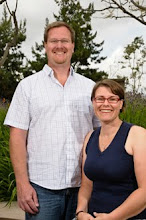 All our other areas of kindy (literacy, literature, etc) are just going on as they were, so I thought I'd just write about what we've done in science and maths for the last few weeks.
All our other areas of kindy (literacy, literature, etc) are just going on as they were, so I thought I'd just write about what we've done in science and maths for the last few weeks.
Science
After we studied dinosaurs, we spent some time with African animals (the desert and savannah animals, your classic staple at the zoo) and lately we've been reading up on animals of the seas. We read a few books from the library on animals from these categories, and Joshua has done some sort of oral narration for each. The one on African animals had a sentence or three on each of the animals he could remember:
Giraffes have really long necks and they reach up to the sky. They stretch their necks to eat the highest leaves.
Elephants just knock you over with their trunks. They swing their trunks at you and they hoon you up with their trunks. Elephants are humongous, like the grey one which is so tall it reaches up to a giraffe’s neck.
Lions can eat you up. Lions roar so everyone knows they are there in their territory. We read a story about a lion that was in a shop. The lion got kept in a cage. His owners brought him back to his country. There was another lion which he had to bow to, because he was showing him that he knew the other lion was the boss.
Leopards lie down up in trees. They have spots.
Fast Cheetahs are called “Duma” [in Swahili]. They pounce on something to catch it to eat it.
Zebras can leap very fast to safety from fast cheetahs. Zebras can have brown or black and white stripes.
Gazelles can leap. Gazelles look a bit like antelopes. They have horns with round circles on them.
Rhinoceroses have got horns on them which can be used to hurt people. They have thick hard skin.
Hippopotamuses can chomp you in one gulp! They are very strong and they live in muddy places with lots of water.
Meerkats live in hot dry sandy places called deserts.
I already posted Joshua's book on whales, and he was enthusiastic to do one on sharks also, I think he'll be finished that by the end of this week.
Some examples of fiction books we read aloud (yet again) during our study on African animals:
The Lion's Paw by Jane Werner Watson illus by Gustaf Tenggren
How the Zebra Got Its Stripes Tales From Around the World by Justine and Ron Fontes illus by Peter Grosshauser
Tawny Scrawny Lion by Kathryn Jackson illus by Gustaf Tenggren
all of these are Little Golden Books from our family shelves, just in case you didn't recognise the titles.
A sample list of non-fiction books from our study of Sea creatures:
Blue Whale by Rod Theodorou
Sea Anemones by Lola Schaefer (I've been saying "anenomes" all my life - now I know better)
I Love Sharks by Steve Parker illus John Butler
Little Penguin by Greg Pyers
Seagull by Stephen Savage illus Andre Boos
We thought about going to the zoo for a visit after we studied the African animals, but somehow it didn't happened. However, as a treat after this study, this Saturday we're going to visit the Aquarium of Western Australia, which is handily only a few suburbs away. Oh, and we also watched Finding Nemo on Monday (a public holiday). Now Joshua keeps asking me at odd times, "Mum, are fish really friends not food?"
Maths
We've taking a fortnight's break from Singapore Earlybird Maths 2A to do some maths manipulative play, using a new acquisition, Maths Mastermind Starter Level which I finally bought on a very special sale from my friend Mrs T who is a Total Learning sales person, for only $10 (normally around $35). It includes a variety of manipulatives (flat foam shapes, coloured and shaped beads, coloured cubes which connect on all six sides, a spinner, etc, with an activity book with 62 ideas for things to do with the materials which build the kids visual and spatial skills, as well as giving them practise with fine motor skills and other more specifically mathematical skills. This is giving us a great break from the activity and workbook task of Singapore Maths, which we'll be back into next week.
The J. K. Rowling Christmas Quiz!
2 weeks ago









No comments:
Post a Comment